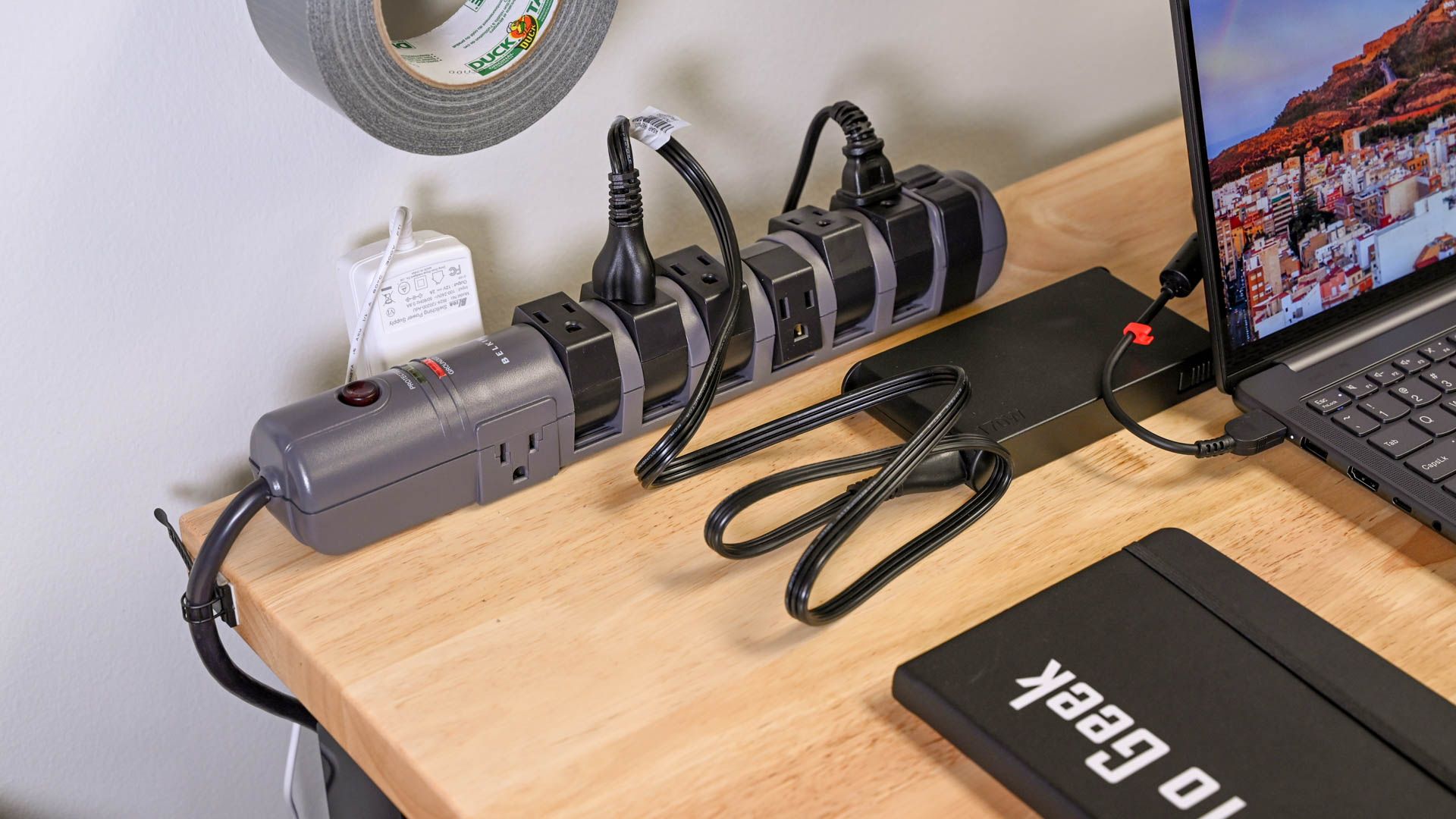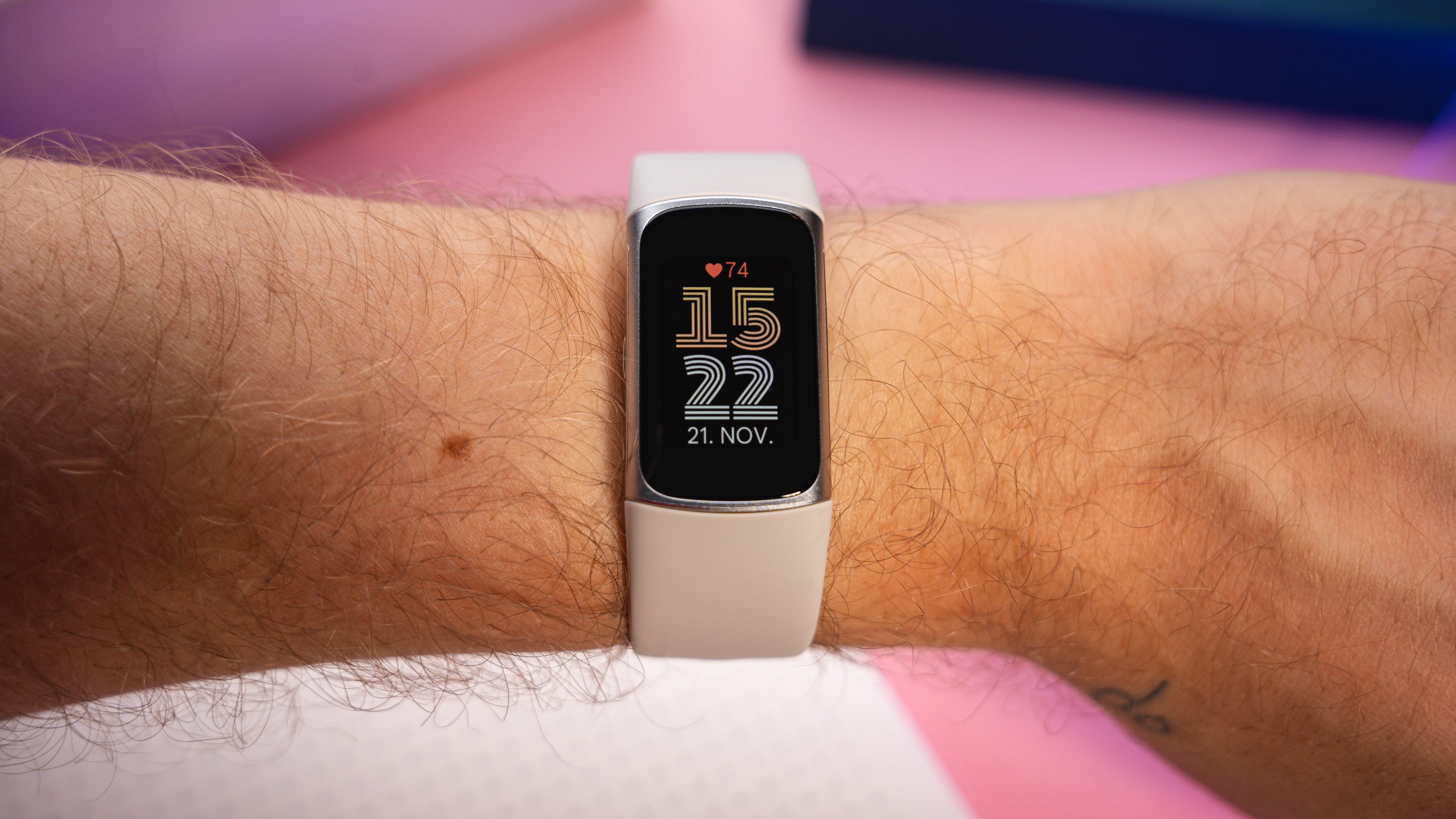
El Shaddai: Ascension of the Metatron is one of the most underappreciated gems of the PS3/Xbox 360 era. That’s what people who’ve played the unusual action platformer, released back in 2011, will tell you.
One look at El Shaddai — the only game developed by Ignition Tokyo before it was shit down just before the game’s 2011 release — reveals a stunningly beautiful world bursting with light and colour. Visually, it captured people’s attention. However, while the game sold almost 100,000 units by the end of 2011 in Japan, it failed to make a splash anywhere else in the world.
Fast-forward to 2024, however, and the game is getting another chance on Switch. El Shaddai: Ascension of the Metatron HD Remaster launches worldwide on 28th April 2024, with Limited Run Games releasing a physical version. The game already made a return on Steam in 2021, but this is the first time Nintendo console owners will get a shot at exploring the stunning, unique world as the scribe Enoch and fallen angel Lucifel.
Ahead of the Remaster’s release, we had a chance to chat with the game’s Director and character designer, Sawaki Takeyasu. Known for working on character designs for Devil May Cry, Steel Battalion, Okami, and Fatal Frame: Mask of the Lunar Eclipse, El Shaddai was the artist’s first game in the director’s chair. Since then, Takeyasu has gone on to form his own studio, crim, and managed to buy back the rights to El Shaddai from former publisher UTV Ignition Games, developing a handful of follow-up media, including 2017’s dungeon crawling RPG The Lost Child.
Our chat with Takeyasu looks back on the original release of El Shaddai, how the Apple iPod inspired the visual style, and the challenges of creating such an ambitious game in 2011 as well as the difficulties (and rewards) of bringing it to Switch in 2024.
Nintendo Life: This is the first time we’ll be getting El Shaddai: Ascension of the Metatron on a Nintendo console. What makes the game such a good fit for the Switch?
Sawaki Takeyasu, Director and character designer of El Shaddai: In order to make the Nintendo Switch version of this game, we made an entirely new game engine to improve the game with 60 frames per second in Handheld mode and full HD in TV mode. This engine also allowed the game to run more smoothly than ever on a more beautiful screen and partially reduced its loading times compared to the past. Additionally, since El Shaddai features many jump actions, we felt playing in Handheld mode on Nintendo Switch is particularly enjoyable.
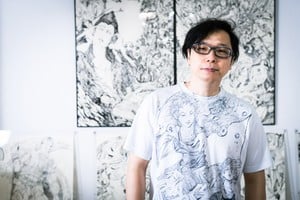
Overall, we think that the Nintendo Switch is the best platform for playing El Shaddai due to these enhancements.
El Shaddai was your directorial debut after working on games such as Devil May Cry and Okami. What experiences did you bring with you when directing your first video game?
I had quite a challenging experience transitioning to a new studio and taking on the role of a director. During my time at Capcom, I honed my skills as a technician, but assuming the responsibilities of a director at a new studio brought about a significant increase in my workload.
…my biggest inspiration for El Shaddai was the art directors who teamed up with me
While I was confident in my ability to oversee the artistic aspects, starting a new game studio required me to handle various aspects such as management, team building, recruitment, studio production and making decisions as a director regarding scenarios, music, 3D models, programming and of course the gameplay. To tackle all of these responsibilities, I made an effort to have a clear vision and build a team I could trust to help me achieve my goals.
El Shaddai is based on the apocalyptic Hebrew text, the Book of Enoch. What drew you to that in particular?
The Book of Enoch was relatively unknown among Japanese audiences, especially its name at that time.
The fact that foreign audiences were more familiar with it than Japanese people sparked my interest. Also, I decided to create a fantasy world based on the Book of Enoch, rather than using the source material directly, which allowed me to take creative liberties.
As a result, the story of Lucifer’s Fall, especially the bonus after-story that is included in the game, diverges significantly from the original Enochian text, becoming an entirely original narrative.
The visual style of El Shaddai is incredibly beautiful and it still looks fantastic today. Can you talk us through how you came up with the art style and about any inspirations?
…the idea of bringing El Shaddai to a new audience on the Nintendo Switch is exciting
I aimed for the themes of creating a world that no one has ever seen and a world that never becomes old. There are many inspirations but at that time, I got inspired by Apple’s iPod commercials.
But my biggest inspiration for El Shaddai was the art directors who teamed up with me. Just because of their existence and help, I was able to actually visualize the complicated visions that I imagined and came into life as a game.
Rereleasing the game in 2024, how do you think themes of religion and self-sacrifice will resonate with players compared to in 2011?
It’s interesting to note the cultural differences in how El Shaddai is perceived. While the game may be seen as a fantasy in many parts of the world, it appears that in Japan, it’s generally not associated with religion. Instead, it’s viewed more as a light-hearted and fun experience, almost like a game of the internet meme of that famous quote from the game “No problem. Everything’s fine” or “I’ll take the best you have”.
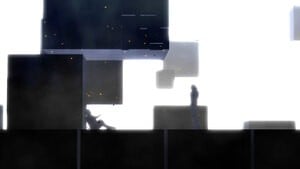
Therefore, I have an impression of how there are different perceptions between Japan and other regions particularly concerning the emphasis on the visual beauty of the game.
What was it like returning to El Shaddai after you bought the IP rights from UTV Ignition Games and after developing The Lost Child, another game set in the El Shaddai universe?
It’s quite a remarkable journey to talk about the development and release of El Shaddai, especially the fact that the studio had closed by the time it was released, and I was alone in the team on the day of its launch. This unique circumstance likely contributed to the game still being relatively unknown to many people.#
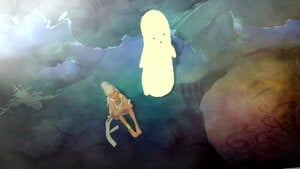
After 13 years, the idea of bringing El Shaddai to a new audience on the Nintendo Switch is exciting. The challenges of porting the game may have initially led to hesitation, but finding a dedicated main programmer, Mr. Hayashibara, who could make it happen, reignited my determination to revisit El Shaddai. It’s a testament to my dedication and passion for the project, and it’ll be interesting to see how the game is received by a new generation of players on the Switch.
You originally stated that El Shaddai was the fourth game in a planned nine-chapter story. With this Remaster and The Lost Child, do you think you’ll return to the El Shaddai universe and the ‘Mythical Concept’ again with a new game?
The story of El Shaddai is further expanded in the bonus novel “Lucifer’s Fall”, covering chapters of 4 to 9.
Additionally, I wrote related books under the brand “Shinwa-Kosou” (Mythological Concept) in Japan adds depth to the lore and world-building of the game. I would like the idea of exploring chapters 1 to 3 in the future.
If you could go back in time and change anything about El Shaddai’s development, what would it be?
I hope that Lucifer might offer a chance to turn back time one day.
All the fallen angels are supposed to transform and re-appear many times was something I had envisioned for El Shaddai, however, due to resource constraints at the time, it was not possible to include all of them. Looking back, I believe that by redistributing these transformation elements, it would have been feasible to include all the fallen angels.
If I could just go back in time, I think I would revisit the overall level design. I hope that Lucifer might offer a chance to turn back time one day.
This interview has been edited lightly for clarity.
Thank you so much to Takeyasu-san for speaking to us about El Shaddai: Ascension of the Metatron HD Remaster, which is coming to Nintendo Switch on 28th April 2024. Don’t forget, if you want to bag a physical version of the game, pre-orders open up on Limited Run Games’ website on 26th January.
Are you excited to visit the world of El Shaddai? Let us know in the comments.
El Shaddai: Ascension of the Metatron is one of the most underappreciated gems of the PS3/Xbox 360 era. That’s what people who’ve played the unusual action platformer, released back in 2011, will tell you.
One look at El Shaddai — the only game developed by Ignition Tokyo before it was shit down just before the game’s 2011 release — reveals a stunningly beautiful world bursting with light and colour. Visually, it captured people’s attention. However, while the game sold almost 100,000 units by the end of 2011 in Japan, it failed to make a splash anywhere else in the world.
Fast-forward to 2024, however, and the game is getting another chance on Switch. El Shaddai: Ascension of the Metatron HD Remaster launches worldwide on 28th April 2024, with Limited Run Games releasing a physical version. The game already made a return on Steam in 2021, but this is the first time Nintendo console owners will get a shot at exploring the stunning, unique world as the scribe Enoch and fallen angel Lucifel.
Ahead of the Remaster’s release, we had a chance to chat with the game’s Director and character designer, Sawaki Takeyasu. Known for working on character designs for Devil May Cry, Steel Battalion, Okami, and Fatal Frame: Mask of the Lunar Eclipse, El Shaddai was the artist’s first game in the director’s chair. Since then, Takeyasu has gone on to form his own studio, crim, and managed to buy back the rights to El Shaddai from former publisher UTV Ignition Games, developing a handful of follow-up media, including 2017’s dungeon crawling RPG The Lost Child.
Our chat with Takeyasu looks back on the original release of El Shaddai, how the Apple iPod inspired the visual style, and the challenges of creating such an ambitious game in 2011 as well as the difficulties (and rewards) of bringing it to Switch in 2024.
Nintendo Life: This is the first time we’ll be getting El Shaddai: Ascension of the Metatron on a Nintendo console. What makes the game such a good fit for the Switch?
Sawaki Takeyasu, Director and character designer of El Shaddai: In order to make the Nintendo Switch version of this game, we made an entirely new game engine to improve the game with 60 frames per second in Handheld mode and full HD in TV mode. This engine also allowed the game to run more smoothly than ever on a more beautiful screen and partially reduced its loading times compared to the past. Additionally, since El Shaddai features many jump actions, we felt playing in Handheld mode on Nintendo Switch is particularly enjoyable.

Overall, we think that the Nintendo Switch is the best platform for playing El Shaddai due to these enhancements.
El Shaddai was your directorial debut after working on games such as Devil May Cry and Okami. What experiences did you bring with you when directing your first video game?
I had quite a challenging experience transitioning to a new studio and taking on the role of a director. During my time at Capcom, I honed my skills as a technician, but assuming the responsibilities of a director at a new studio brought about a significant increase in my workload.
…my biggest inspiration for El Shaddai was the art directors who teamed up with me
While I was confident in my ability to oversee the artistic aspects, starting a new game studio required me to handle various aspects such as management, team building, recruitment, studio production and making decisions as a director regarding scenarios, music, 3D models, programming and of course the gameplay. To tackle all of these responsibilities, I made an effort to have a clear vision and build a team I could trust to help me achieve my goals.
El Shaddai is based on the apocalyptic Hebrew text, the Book of Enoch. What drew you to that in particular?
The Book of Enoch was relatively unknown among Japanese audiences, especially its name at that time.
The fact that foreign audiences were more familiar with it than Japanese people sparked my interest. Also, I decided to create a fantasy world based on the Book of Enoch, rather than using the source material directly, which allowed me to take creative liberties.
As a result, the story of Lucifer’s Fall, especially the bonus after-story that is included in the game, diverges significantly from the original Enochian text, becoming an entirely original narrative.
The visual style of El Shaddai is incredibly beautiful and it still looks fantastic today. Can you talk us through how you came up with the art style and about any inspirations?
…the idea of bringing El Shaddai to a new audience on the Nintendo Switch is exciting
I aimed for the themes of creating a world that no one has ever seen and a world that never becomes old. There are many inspirations but at that time, I got inspired by Apple’s iPod commercials.
But my biggest inspiration for El Shaddai was the art directors who teamed up with me. Just because of their existence and help, I was able to actually visualize the complicated visions that I imagined and came into life as a game.
Rereleasing the game in 2024, how do you think themes of religion and self-sacrifice will resonate with players compared to in 2011?
It’s interesting to note the cultural differences in how El Shaddai is perceived. While the game may be seen as a fantasy in many parts of the world, it appears that in Japan, it’s generally not associated with religion. Instead, it’s viewed more as a light-hearted and fun experience, almost like a game of the internet meme of that famous quote from the game “No problem. Everything’s fine” or “I’ll take the best you have”.

Therefore, I have an impression of how there are different perceptions between Japan and other regions particularly concerning the emphasis on the visual beauty of the game.
What was it like returning to El Shaddai after you bought the IP rights from UTV Ignition Games and after developing The Lost Child, another game set in the El Shaddai universe?
It’s quite a remarkable journey to talk about the development and release of El Shaddai, especially the fact that the studio had closed by the time it was released, and I was alone in the team on the day of its launch. This unique circumstance likely contributed to the game still being relatively unknown to many people.#

After 13 years, the idea of bringing El Shaddai to a new audience on the Nintendo Switch is exciting. The challenges of porting the game may have initially led to hesitation, but finding a dedicated main programmer, Mr. Hayashibara, who could make it happen, reignited my determination to revisit El Shaddai. It’s a testament to my dedication and passion for the project, and it’ll be interesting to see how the game is received by a new generation of players on the Switch.
You originally stated that El Shaddai was the fourth game in a planned nine-chapter story. With this Remaster and The Lost Child, do you think you’ll return to the El Shaddai universe and the ‘Mythical Concept’ again with a new game?
The story of El Shaddai is further expanded in the bonus novel “Lucifer’s Fall”, covering chapters of 4 to 9.
Additionally, I wrote related books under the brand “Shinwa-Kosou” (Mythological Concept) in Japan adds depth to the lore and world-building of the game. I would like the idea of exploring chapters 1 to 3 in the future.
If you could go back in time and change anything about El Shaddai’s development, what would it be?
I hope that Lucifer might offer a chance to turn back time one day.
All the fallen angels are supposed to transform and re-appear many times was something I had envisioned for El Shaddai, however, due to resource constraints at the time, it was not possible to include all of them. Looking back, I believe that by redistributing these transformation elements, it would have been feasible to include all the fallen angels.
If I could just go back in time, I think I would revisit the overall level design. I hope that Lucifer might offer a chance to turn back time one day.
This interview has been edited lightly for clarity.
Thank you so much to Takeyasu-san for speaking to us about El Shaddai: Ascension of the Metatron HD Remaster, which is coming to Nintendo Switch on 28th April 2024. Don’t forget, if you want to bag a physical version of the game, pre-orders open up on Limited Run Games’ website on 26th January.
Are you excited to visit the world of El Shaddai? Let us know in the comments.

